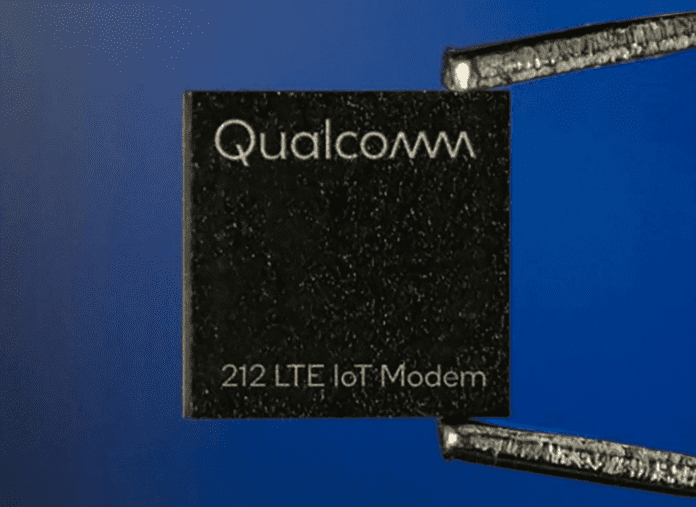Qualcomm has confirmed the releases of a new single-mode LTE-based Cat NB2 chipset for cellular narrowband IoT (NB-IoT) communications, which offers world-beating power efficiency, according to the San Diego firm.
NB2 is standardized in the 3GPP Release 14 as an enhanced version of NB-IoT, and a successor to LTE Cat NB1. The new NB2-based Qualcomm 212 LTE IoT Modem is a “breakthrough” product, which will “usher in a new era for a range of IoT applications” and drive new growth of cellular IoT, said the San Diego firm.
The new Cat NB2 NB-IoT module, set to be released in the second half of 2020, requires less than one micro-amp (1uA) of sleep current; it also offers ultra-low system-level cut-off voltage and provisions to adapt power usage according to varying source power levels, allowing for IoT devices with power supply levels as low as 2.2 volts.
The single-chip module includes modem baseband, application processor, memory, and radio transceiver, with a fully integrated front-end and power management units. It enables modules of below 100 square millimetres in size. It uses an ARM Cortex M3 application processor, and allows for embedded IoT applications.
Cat NB2 NB-IoT will enable low-power wide-area coverage at frequency bands between 700 MHz and 2.1 GHz. Cellular IoT will reach 3.2 billion connections by 2024, according to the GSMA. The highly integrated unit offers a low-cost bill of materials, and quicker module design.
Qualcomm is also launching an SDK for use with the Qualcomm 212 LTE IoT Modem, designed to support developers in running custom software on the applications processor, with an expectation to offer pre-integrated support for cloud platforms such as Microsoft’s Azure IoT SDK.
Vieri Vanghi, vice president of product management at Qualcomm Europe, commented: “Its ultra-low power consumption, compact form factor, and low cost will greatly benefit OEMs creating the next generation of low-power IoT devices.” The device is intended to complement Qualcomm’s 9205 LTE Modem, which offers Cat NB2, Cat M1, and GPRS connectivity in addition to GNSS support.
AT&T, Deutsche Telekom, and Verizon joined the chorus line for the new NB2-based module, which is yet to be certified by any of them. Microsoft was also quoted in a press statement, alongside module makers including Thales / Gemalto, Quectel, and Telit.
Cameron Coursey, vice president for advanced solutions at AT&T, said new modem will “unlock new possibilities for enterprises” on NB-IoT networks through efficiencies in cost, power usage and form factor”.
Steve Szabo, global head of IoT platforms and solutions at Verizon, said: “This new chip offers the world’s highest power efficiency for NB2 IoT connectivity. Verizon and Qualcomm will lead the way to realising the connected future that IoT promises.”

